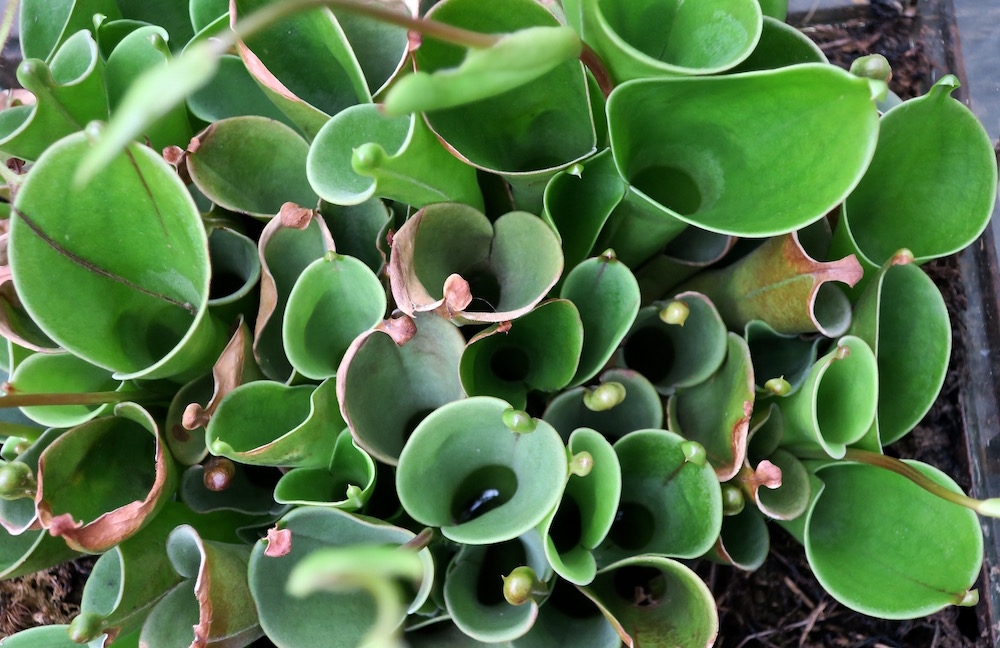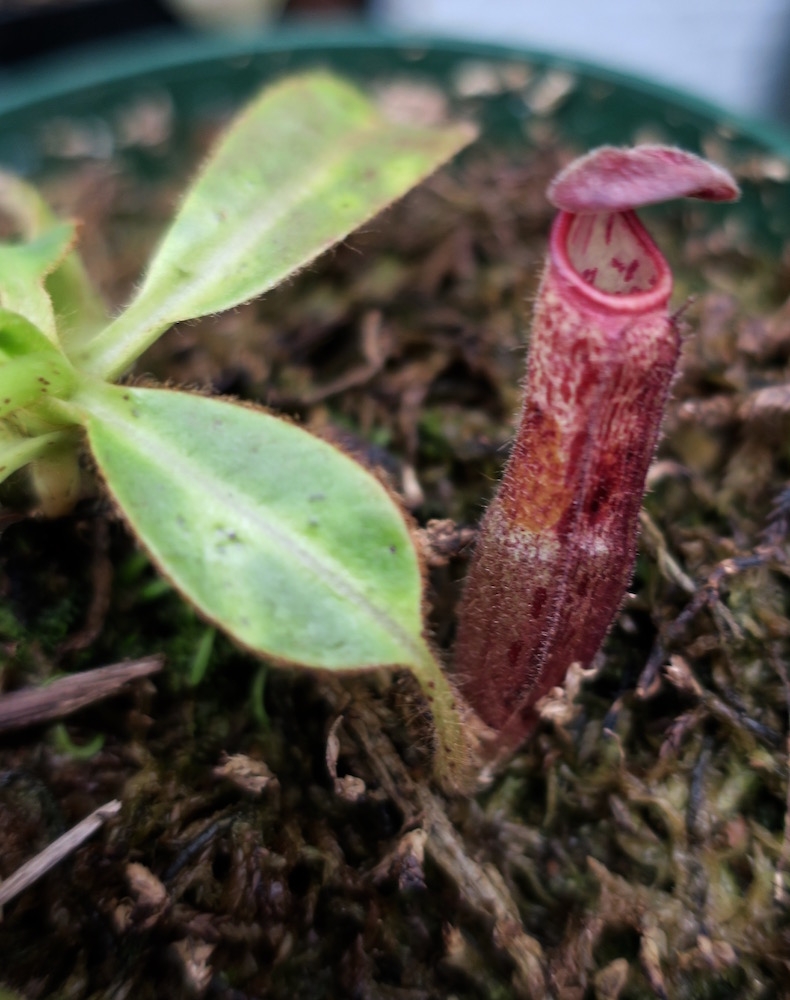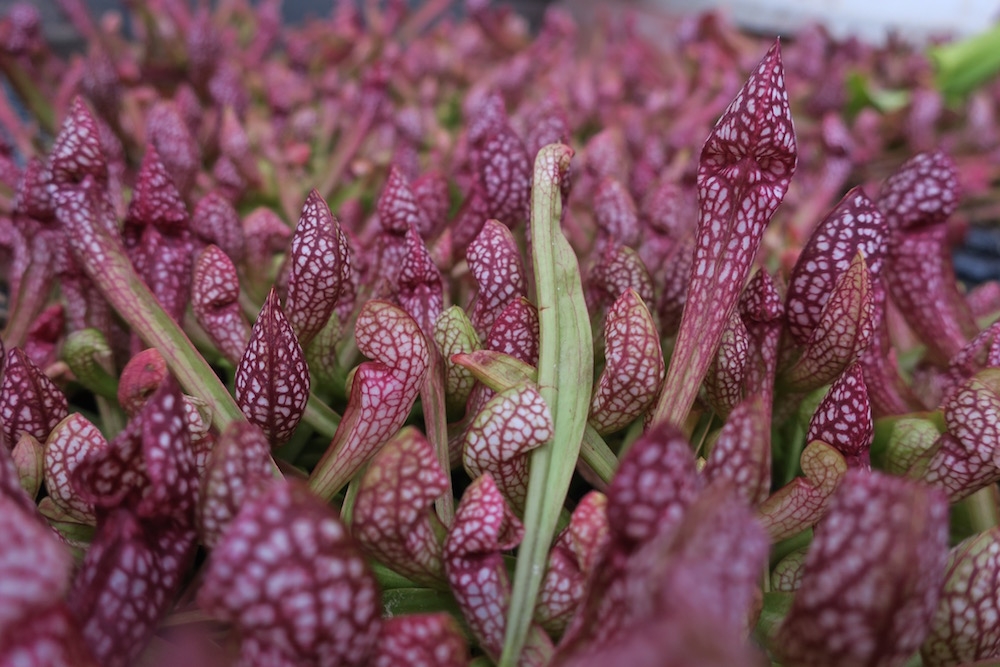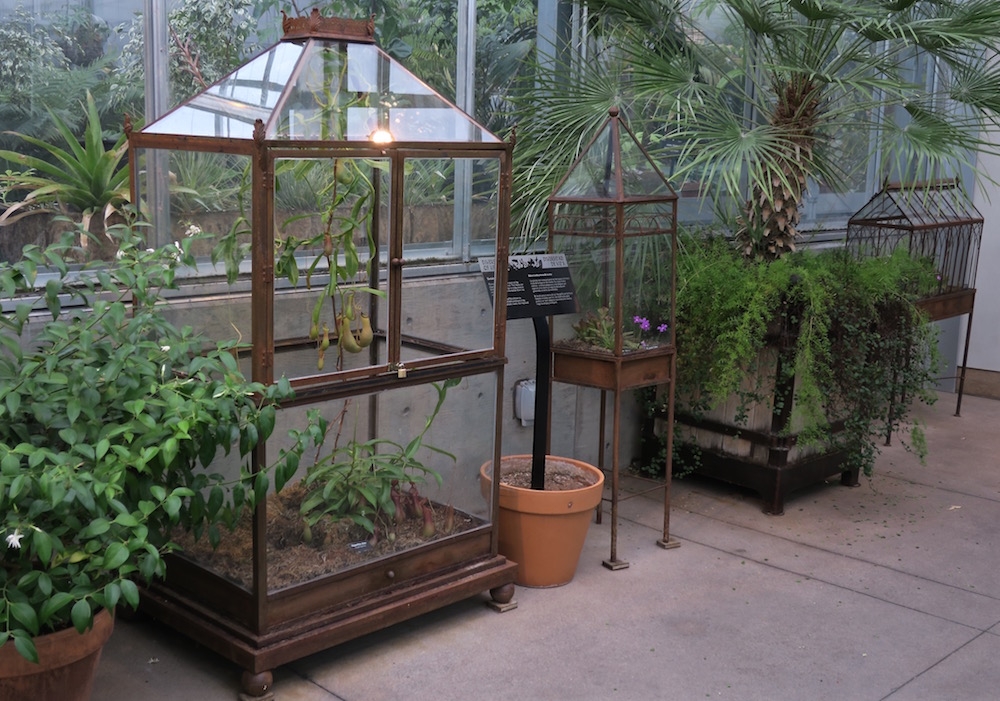Plant Predators: Passive Traps
In part one of this series, we talked about carnivorous plants that use active traps to capture their prey. Next, we cover another trapping mechanism used by multiple species of predatory plants: passive traps.
While the active traps of Venus flytraps, waterwheel and bladderworts capture insects by either snapping shut on them or quickly sucking them in, passive traps do not use any motion to catch their prey.
These inactive traps can be further broken down into “pitfall,” “lobster pot,” and “pigeon” traps.
Pitfall Traps
Modified leaves are used as individual pitfall traps by many types of pitcher plants, including hardy, tropical, Australian and sun pitchers. Hardy pitcher plants (Sarracenia spp.) can be found growing in nutrient poor bogs throughout the United States and into portions of Canada, while tropical pitcher plants (Nepenthes spp.) are natives of Madagascar, Australia and Southeast Asia. Sun pitchers (Heliamphora spp.) are native to swampy areas on high plateaus in South America, specifically Venezuela, Guayana and northern Brazil. Australian pitcher plants (Cephalotus follicularis) consist of a single species which can be found growing in swamps or alongside streams and creeks in southwestern Australia.
Pitfall traps often have a nectar producing portion near the entry of the trap and may also be brightly colored. Both features aid in luring insects. Downward-pointing hairs can often be found inside these traps, which make it easy for insects to crawl in but much more difficult for them to get out. Some of these pitfall traps have liquid in the base which contains digestive fluids produced by the plant. Others do not have a pool of water but exude digestive enzymes once the insects starve in the trap. Some large species of tropical pitcher plants have even been known to draw rodents into their traps!
Lobster Pot Traps
One hardy pitcher plant that uses a slightly different passive trapping mechanism is the parrot pitcher plant (Sarracenia psittacina). The method of trapping used by this species is referred to as a “lobster pot” trap and encourages insects to crawl deep into a trap with the lure of nectar. Once inside, the bug is confused by the presence of glassy windows, known as areoles, which allow light into the trap. It cannot find its way out through the darker trap opening and is slowly digested by the plant.
California pitcher plants (Darlingtonia californica), which are native to a small range in northern California and southern Oregon, also use these types of traps in combination with a pitfall trap. Insects are drawn to the mouth of the trap by the sweet scent of nectar. The pitcher is lined with areoles, which allow light into the trap, confusing the insects. It becomes easier for the bugs to find their way further into the trap then to find a way out through the darker opening, and they eventually reach a portion with slick, downward-pointing hairs—the pitfall portion of the trap. Unfortunately, it is all downhill from there for the insect—both figuratively and literally.
Pigeon Traps
The final type of passive trap used by carnivorous plants can be found in the multiple species belonging to the genus Genlisea, commonly referred to as corkscrew plants. Native to Central and South America as well as Africa, these plants grow in aquatic or semi-aquatic habitats and feed mostly on protozoans. Researchers are still studying how prey are drawn into the plants’ traps, but once there, the trap uses a technique also used in pigeon traps. Prey push past inward-pointing hairs as they enter the trap, which prevent them from backing out.
At the Gardens, you can see examples of carnivorous plants with passive traps in the terrariums located at the east end of the Orangery. Sun pitchers live in two of these terrariums and hardy pitcher plants are often rotated into the displays during the summer months. A tropical pitcher plant (Nepenthes alata) can be found in the largest terrarium, while other Nepenthes species can be viewed through the glass panels which divide the Orangery from the easternmost greenhouse.
In the third and final part of this series, we will examine carnivorous plants that use sticky “flypaper” type traps to capture their prey.
Gallery




Add new comment